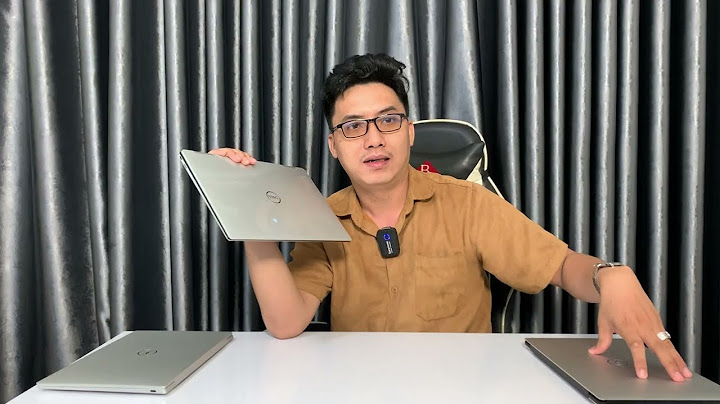The f4/70-210mm Minolta beer can lens is inexpensive and very sharp and as good as a modern Sony lens that costs almost 50 times more. Show By Marwan el Mozayen  If you search YouTube videos or other online descriptions on the subject of Minolta AF lenses, you can’t get past the reports on the f4/70-210mm Minolta beer can. It is inexpensive and very sharp at at f4. In the range of 80mm – 180mm at an of aperture f5.6 it is as good as a modern Sony 80-200mm f2.8 that costs almost 50 times as much. To be fair, in extreme light situations like backlight, modern lenses do have an advantage as there are more modern coatings on the glass. At wider apertures these coatings play an important role in lenses of this class. But basically, the old Minolta delivers almost identical image results when the aperture is set the same.  The Minolta AF 4/70-210 mm was introduced in 1985 together with the Minolta 7000 body. The lens is probably one of the most common AF telezooms ever made. Since it was also built to a very high mechanical standard, these lenses are still used very today despite having been in service for over 35 years. Optically, the AF 4/70-210 mm is based on a series of similarly designed Minolta zooms for the SR bayonet. Leica also offered the same optical design with the Leica R Vario Elmar 4/70-210 in its own Leica housing. All these zooms are built in the classic four-group design: Base lens, variator (change of focal length), compensator (compensation of focus shift by the variator) and focusing group.  The distinctive design of this lens generation ed to its nickname “Beer Can”. It is relatively large and heavy, but in comparison to common kit zooms, it is also one f-stop faster (f4 throughout). The 4/70-210mm is, unusually for the price range, made entirely out of metal. Both zoom and focus rings run very smoothly and without play, even after years of use. The lens can be focused down to 1.2 m and then reaches a scale of 1:4 at 210 mm focal length. At maximum focal length setting, a noticeable vignetting is visible.  In the short and medium focal length range the lens is almost on par with the 2.8/80-200 mm APO G and the 2.8/70-200 mm G SSM. The performance peak is around 135mm and only at 200mm, less focused areas in the corners are visible in comparison to the faster zooms. In infinity range, the moderate light fall off is generally not very annoying. Distortion is virtually identical to that of the latest Minolta 2.8/70-200 mm G SSM in both shape and quantity – moderately barrel-shaped at 70 mm, moderately pincushion-shaped at 210 mm, and virtually balanced around 135 mm. In typical portrait situations, the bokeh is excellent, only becoming slightly choppy when the subject is at a greater distance near infinity. It is no exaggeration to say that the 4/70-210mm was one of the best lenses available for the Minolta system. It was so well calculated by Minolta that Leitz Wetzlar used the same calculation for their Leica R sliding zoom. In 1987, a German photo magazine tested zoom lenses in this class. The Carl Zeiss Vario-Sonnar t* 70-200mm f3.5-4.5 scored best, closely followed by the Leica Vario Elmar, which itself scored only slightly better than the Minolta beer can described here. Pricewise, however, despite having autofocus, it is significantly lower than its Leica R bayonet counterpart. In today’s comparisons with much, much more expensive lenses the image quality is still above average. Minolta has a very strong lens design team, who believed that the colour rendition of every lens in a series should match. The 4/70-210mm Minolta beer can lens was no exception to this principle and it faithfully combines Minolta colours. We have a favour to ask. We want to make these online articles free to the world. We see it as our contribution to the photographic community. You can help by subscribing to our awesome analogue photography magazine – https://shop.silvergrainclassics.com/subscriptions/ …old film lenses are analog devices and not digital. An old lens will not ‘shoot at a lower resolution’ but give reduced contrast. The classic Minolta ‘beercan’ lenses date from the 1980s. There is a lot of conflicting advice on their suitability with modern cameras. On the one hand, the 70-210 is seen by many as a classic: Minolta color, built like a tank and fast autofocusing on modern DSLRs. Although its constant f4 rather than f2.8, that’s only a stop difference, and it makes a good poor-man’s long telephoto. You can pick up a beercan for peanuts from eBay. On the other hand, we have all the issues associated with 1980s film camera optics: it is poor on chromatic aberration and flare. There’s also the question of resolution. 1980s lenses may have seemed good back in the day when your final output came as print, but the old stuff may not hack it against modern glass when you go pixel peeping from a modern 24MP+ DSLR. Finally, there is the question of age. These lenses are 30 years old and you have to be careful about lens mold. Many lenses of that age have it and if you keep them stored with your existing lenses, your whole collection may become infected! A picture paints a thousand wordsWithout any ado, let us forget the specs and science, and get straight to the photography.  The photograph above was shot with a large beercan on a Sony A77 APS-C 24MP camera in Program mode, f7.1, 1/400s, ISO120. It was shot hand held from a distance of about 40-50 metres away.  The statue is made of spun wire rather than stone. You can see this in the per-pixel size close-up above. Let’s just recap: this is a 24MP image shot hand held at ISO125 from some distance away. Of course, there’s post production here, but this pretty much blows out the resolution question: sharp at 24MP. The color is also good. Best of all, I am shooting on an APS-C, which means that 70-210 converts to 105-315 and with anti-shake (it comes as standard in all Sony Alpha camera bodies). I’m stupid enough to expect to be able to shoot at 315mm/f7.1 hand held… and it worked: no blur! This is not a one off either: all my shots with this lens came out just as sharp. This would just not happen with a more commonly used super-zoom (such as my Sony 18-250), which would have a minimum f stop at the high end of f6.5, so f7.1 would still be a bit soft. Incidentally, its worth noting that old film lenses are analog devices and not digital. An old lens will not ‘shoot at a lower resolution’ but give reduced contrast. As long as the contrast can be brought back to normal levels in post production without removing detail, there is no problem. I have read internet posts where someone rejects an old lens because it ‘doesn’t have enough resolution’ or ‘resolving power’ for a given modern camera. Resolution is not something any lens has, and its not about the smallest dot a lens can resolve, but how sharp that dot appears in the final output (either through lens contrast or modern digital convolution filters and micro-contrast enhancements applied in post). Don’t worry about the numbers: judge by the contrast and detail in your final photograph as we have done with the sculpture above. Another issue with older glass is optical aberration: distortion, flare and chromatic aberration. At tele distances, everything will be flat, so we should not be concerned with distortion. The beercan flares like mad, but that’s fine as there’s no point taking a shot like this with the sun in front of you. As you can see by the boy’s shadow, the sun is almost exactly at 90 degrees to my right, and that’s probably as close to central you would want a hot summer sun unless you are also using Flash and ND filters.  The beercan also gives lots of purple chromatic aberration wide open, so I’m stopped down quite hard for 24MP: f7.1. The original image still gave me a little CA on the boy’s highlights. We’re looking at per pixel at 24MP here so this will never show up on print.  Nevertheless, Lightroom 5 easily got rid of the fringing and satisfied any pixel peeping urges I might have. This works well because the CA tends to be pure purple, making it easy to remove. Using the beercan on modern DSLRsI use the beercan on a Sony Alpha A77, with which the beercan works very well: quick autofocus speed (but note that the lower end Sony alphas have a weaker focusing motor, and autofocus may be slower on those models), and despite the size, actually balances very well on the camera.  The nearest modern lens alternative is the Sony 70-200 f2.8. That goes for $2000.00, so although it has better optical characteristics, it only gives you a stop more in speed from f4. That stop may be important for professional shots, but for the happy enthusiast, it probably is not worth the x10 price hike! This is especially true when you consider that long fast tele is probably an edge-case for most shooters except sports or wildlife.  Physically, the lens is 100% metal apart from the lens hood and rubber grip area. It is a very shiny black (almost piano black). The lack of markings (compared to current lenses), constant diameter and coloring actually makes the lens look modern because of its minimalism. It certainly stands out against my drab grey-black modern lenses! Optical extras include the fact that the lens is a ‘true zoom’ or parfocal, meaning that it maintains focus as you change focal length. This makes the lens very easy to use as it doesn’t call attention to itself as you compose your shot. It would also make the lens useful if you ever needed long tele with video (but note that the lens is noisy on focus). There is also macro at 210mm, probably 2:1, but I haven’t really tried it (as I have a dedicated 1:1 macro lens in my set). Perhaps the best optical feature of the beercan is its color and contrast out-of-camera, as well as its colourful bokeh.  As you can see here, these three features can conspire to make even the most mundane photographic subject better! You can also see the chromatic aberration here (highlights at top of post), but as mentioned earlier, this is easy to remove in post-production, or by shooting stopped down (the photo was shot wide open to show depth of field at f4, but going above f5.6 would have fixed the CA). When photographed in ideal conditions (not into the sun), the contrast and color out of camera is so good that you would assume polariser filters or post work has occurred  Have a look at the blue sky in this image, and the contrast between the sky and tree. There is not a hint of CA in this photograph either as we are away from wide open. Wonderful! Once the sun is directly into the lens though, the issues start.  We now lose a lot of the contrast (although we do get a nice graduation in the sun highlight, something that does not occur on a typical kit lens, or even some more expensive current optics, and is a feat from the Sony A77 as I am shooting at ISO64!).  What we do see though is difficult to remove flare. It is several shades of purple so cannot be removed without cloning it out. If this was a paid for shot, you would be in trouble, because the beercan’s flare is not pretty enough to be passed off as artistic intent or styling. So if you buy a beercan, Colors, contrast and bokeh are to die for, chromatic aberration is strong but can be removed in post, and flare is your worst enemy. The lens is not quiet by any measure, although that may not be a problem at long tele, as the subject will probably be too far away to notice! Issues with buying old glassI got the lens from eBay. The seller sent over the original carrying case, the instruction book, and even threw in a free small beercan (35-70mm f4 constant), also with the original case. All well and good, but the 70-210 had mold in the front lens assembly. That is not fatal, and a quick look at a disassembly guide on the web enabled me to take the affected lens out and clean it all off. Nevertheless, I store my old lenses separate from my new ones. Not much of a constraint (they go into the same camera bag when I go out shooting), and a cheap way to build up on some classic mid speed glass. If you are buying 1980’s lenses for a Sony Alpha camera, Minolta AF lenses from that period will fully work off the bat because modern Alphas maintain backwards compatibility with them. Third party lenses from the same period will most likely only work in manual unless they have been upgraded for modern autofocus (which will cost more than the lens is worth, given that the market is flooded with working Minoltas). Be wary of buying 1980’s Sigma and other non-supported brands. The most important issue with old glass (if you believe half the internet) is ‘lack of resolution’ or ‘lack of resolving power’. As noted earlier, this is a non-issue. See the notes section at the end of this post if resolution is a bugbear for you (or you have heard otherwise so often that you need proof). Optically, the biggest issue you will get with old glass generally is the lack of modern coatings. This presents itself with a greater loss of contrast and more flare when shooting into the sun. It occurs because old lenses are bad at controlling internal reflection between lens elements (modern lenses absorb the stray light through their coatings). You need to be aware of this when shooting with older glass, but in practice it is not a big constraint as you rarely need to take such a shot, and when you do, the resulting aberrations can often be used artistically (who needs Instagram when you have the original glass that causes the effect…). Another issue you may find at the low end is greater optical distortion. Old lenses were designed without the benefit of current computer simulation power, but that does not have to be an issue when the modern photographer has the benefit of modern computing power in post production, and most optical distortion can be corrected to current lens standards in Lightroom. The issue with lens age and mold is just a part of the game. You will spend less money with old glass, but the downside is having to occasionally dismantle a lens or bin it completely if you got sold a dud. If nothing else, learning to work with old glass means you are forced to open the odd one up, and get a better understanding of what a lens actually is. The important thing is to actively look out for mold, and either fix it or bin the lens when you do find it (and don’t pay so much on an old lens that you cannot afford to bin it). ConclusionMy default kitbag includes the following:
Although there’s 5 lenses here, 3 and 4 are tiny, so we’re only really talking 3 large lenses. I’ve got the most commonly used focal lengths at a constant f2.8. I also have a couple of fast primes at 50 for low light and high depth of focus. Finally, I have the long end covered up to 315mm at a constant f4. I have nothing between 55-105mm but that’s ok by me. I could cover it via my small beercan, but that stays home as that range isn’t really interesting to my shooting style except for portrait (although the 50 f1.4 is a good stand in for portrait because of the nice bokeh and ability to go down to f1.4). The take away from this lens set is that two of them are 1980s Minolta glass, both bought from eBay at a fraction of the price of equivalent modern glass. Yes, they have issues with shooting wide open into the sun, but to be honest, doing that doesn’t often lead to keepers with any glass (unless you are shooting with off-camera Flash, and that is another ball game for a later post). I’m happy to put up with having to fix the CA in post for the Minoltas, because the famed Minolta color (deep color and good contrast out of camera) means I save that time having to sort out other issues in post. The initial photo from this post is a good example where ‘Minolta color’ becomes useful. The separation between the boy, foliage and sculpture is so large that it almost looks like the boy was composited in! In fact, the separation out-of-camera was actually larger: the sculpture was darker and the background foliage was lighter. The high contrast between the image elements gave me a lot of help in making mask selections and more than made up for the time lost (10 seconds) fixing the chromatic aberration. Notes
Note Addendum: Old lenses and resolving powerAn issue that crops up with old lenses is ‘resolution’ or ‘resolving power’. The argument goes along the lines of ‘old lenses were designed for far lower resolution than current cameras so image quality suffers’. What that argument doesn’t tell you is
Let’s look at the problem with a hypothetical simple sensor…  Consider a digital camera sensor with only three photo sites. Each site can detect black or white. If we try to take a picture with this three pixel sensor, such that only the centre pixel is lit, we see an image such as i). We will get a high voltage for the center pixel and a low voltage for the outer pixels. The sensor digitiser will convert these to the signal ii), which as a digital bitstream is ‘010’, and that is what our RAW file will contain. When we view the RAW file as an image, we see our row of three pixels as per i): black, white, black. Now, suppose we put a lens on the front of this sensor that is unable to resolve correctly. What would happen? As a waveform, we would see something like iii) coming out from the sensor. The centre voltage has spread out so it is no longer a definite high voltage anymore, and the two low values have also degraded. How does the digitiser handle this? Well it has a trigger level half way between the high and low voltages. If the voltage is higher than this level, we see a ‘1’ in our RAW file, and a ‘0’ for anything else. The digitiser will still see the center pixel as a ‘1’ because it is still more than the trigger level, and it will still see the outer pixels as ‘0’ because they are still below the level. Our blacks are still black, and our whites are still white, despite the fact that the input signal to the digitiser is significantly degraded! As an aside, this feature of digital systems is actually the only reason why we started encoding analog values digitally for both storage and transmission: as long as the noise introduced to our digital signal is less than half the difference between a logic ‘0’ and a ‘1’, we get no noise because a ‘0’ is still a ‘0’ and a ‘1’ is still a ‘1’ . In this case, our noise is the lack of analog resolving power before the digitising stage, but we do not see it because its introduced error is less than half our sensor’s bit accuracy, and therefore rejected. So, unless the lens is good for less than half the maximum resolving power of the camera sensor, you do not need to worry because the digitising process corrects the noise introduced by the lens. Put another way, if your lens is only good for 14MP (which it typically is), then you do not need to worry for a 25MP camera, because 14 > 25/2.  Ok, so now you are thinking ‘yeah but most sensors are not just detecting 0 or 1: they are detecting a 000000000000 to 111111111111 (plus they use separate photo sites for the red, green and blue components of each pixel), so instead of 0 or 1, so what you would actually see with three adjacent pixels from a real sensor is dark grey-light grey-dark grey (as per the image above) instead of black-white-black’ as per i). You might even be thinking ‘the resolving power of a lens varies with focal length: the more you zoom, the more the light is travelling through less of the glass area, which amplifies errors and changes resolving power for the worst… so at some point, a long tele lens like the beercan will be causing big enough resolving errors to cause worry’. Yes exactly that will happen, and there is a name for this process. It is not called something scary like loss of resolution, loss or resolving power or wasting your sensor resolution by being a cheapskate. It is called simply losing contrast. Blacks turn to grey and whites become less bright. That is not anything to worry about because you can quantify it: you can see it physically just by looking at your photograph. An old lens that is focusing correctly but resolving to a lower level than your camera will just lose contrast. That’s not really any surprise because you know all about this already: a good lens that you artificially make worse by rubbing a greasy thumb all over it will do exactly the same thing. The grease scatters the light and causes the same resolving issue. You can correct all this easily: just increase the contrast in post. Better still, you can realise that the issue is really micro contrast rather than contrast, and increase clarity (except of course on skin, where the loss of contrast is potentially a good thing). Either way, all it takes is a small tweak on a single Lightroom slider (and perhaps a mask to avoid changing skin contrast). Alternatively, you can just use a brand of old lens well known for high contrast so that loss of contrast is less of an issue. Well, ‘Minolta color’ means many things, but one thing it means is really good contrast, so if you are using Sony NEX or Alpha, buy Minolta and don’t worry! What is Minolta beer can lens?The Minolta AF Zoom 70–210mm f/4 lens (colloquially known as the "beercan") is an autofocusing telephoto photographic lens compatible with cameras using the Minolta AF lens mount. How much does a Minolta 70 210mm f4 weight?Minolta Maxxum 70-210mm f/4 (For Minolta MAXXUM and Sony Alpha cameras, 55mm metal filter thread, 24.650 oz./698.9g, 3.6'/1.1m close-focus, about $100 used). |





















